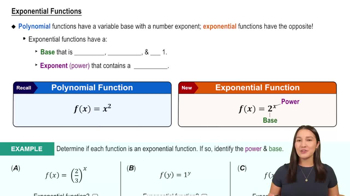Suppose that ƒ and g are both odd functions defined on the entire real line. Which of the following (where defined) are even? odd?
a. ƒg
b. ƒ³
c. ƒ(sin x)
d. g(sec x)
e. |g|
 Verified step by step guidance
Verified step by step guidance Verified video answer for a similar problem:
Verified video answer for a similar problem:



 6:21m
6:21mMaster Properties of Functions with a bite sized video explanation from Patrick
Start learning